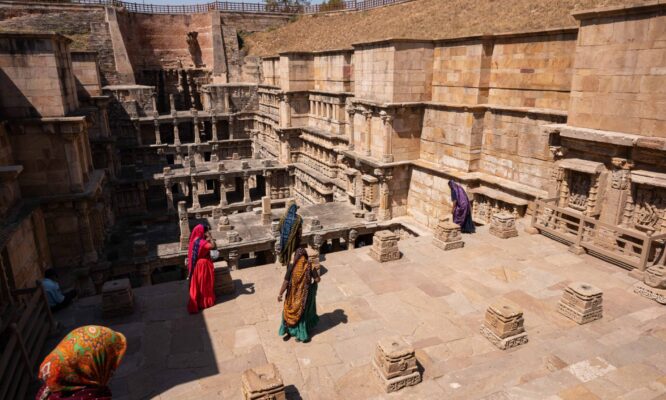Liverpool FC’s Anfield stadium has retained the spirit of its fantastic heritage and is a site that fans of the club and visitors to the English city should not miss
It starts shortly before kick-off and the spine tingles. The opening chords of the Gerry and the Pacemakers song You’ll Never Walk Alone ring around Anfield and, as they have done for more than half a century, the home crowd quickly joins in, standing and raising their scarves to the skies as they sing one of football’s greatest anthems.
The eyes of first-time visitors turn to the iconic Kop stand, a part of the stadium that came to the fore in the 1960s and 1970s when Liverpool FC were establishing themselves as England’s pre-eminent football club. The Kop became renowned for witty and enthusiastic chanting, and a close bond was formed between the players and the club’s most vocal and passionate supporters, or “Kopites”, as they are affectionately known. It remains the most famous stand, and the largest with a single tier, in English football.
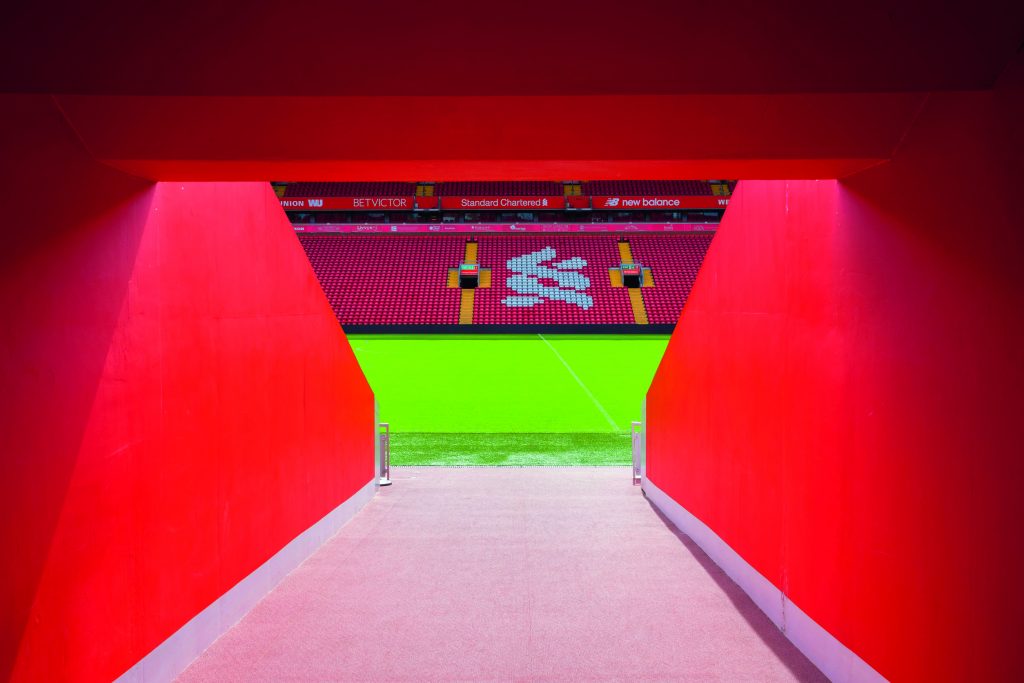
New stands appeared in 1895 and 1903 and then, in 1906, a huge banking was built on one side. A local journalist likened it to the Spion Kop, a hill in South Africa where many Liverpudlians had died in battle in the Boer War, and the “Kop” name stuck. A roof was added in 1928 and it stood almost unaltered until seats were installed in 1994. When 96 Liverpool supporters died in a crush at a match in Sheffield in 1989, the Kop became a shrine to the victims, with fans placing scarves, flowers and poems on the terracing. The latest significant change to Anfield came in 2016 with the opening of the Main Stand, which extended the capacity to more than 54,000, making it the sixth largest stadium in England.
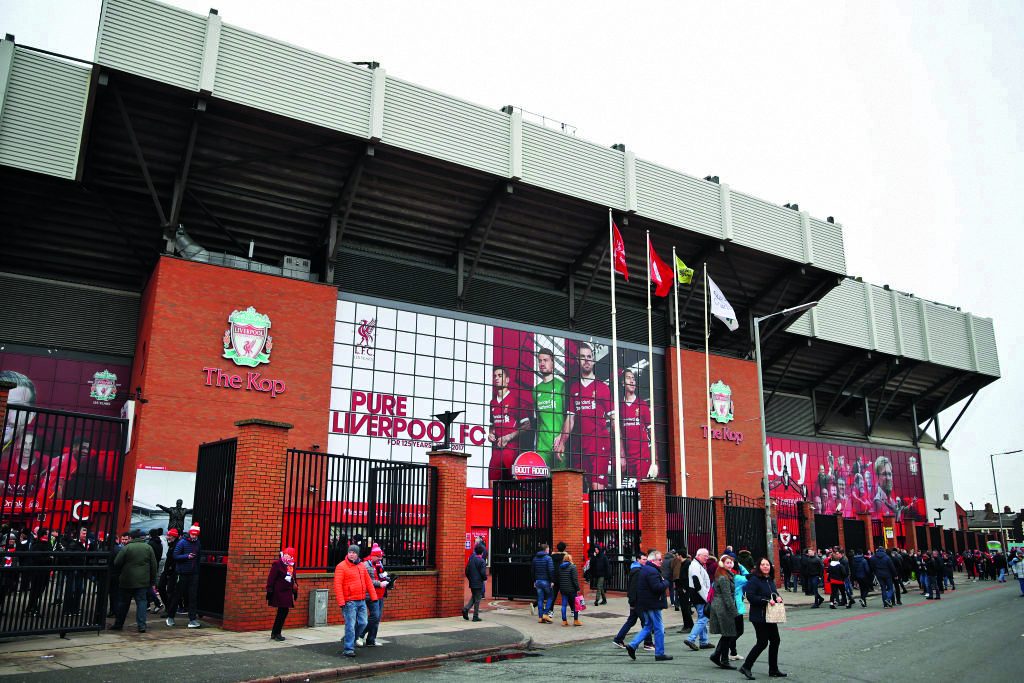
All followers of the game, whether Liverpool devotees or otherwise, should try to make the trek to Anfield if they’re visiting the city, where the club’s remarkable history is in evidence. Visitors can enter through the Shankly Gates, named after Bill Shankly, the architect of the club’s rise to the peak of European football. They can then glance up to the corner between the Kop and Sir Kenny Dalglish Stand, named after the Scot who was a league champion many times with the club as player and manager, and see a flagpole: this is part of a mast from the Liverpool-registered SS Great Eastern, the world’s biggest ship at the time of its launch in 1858. It has stood by the Kop since 1928, but Anfield’s story goes back even further.
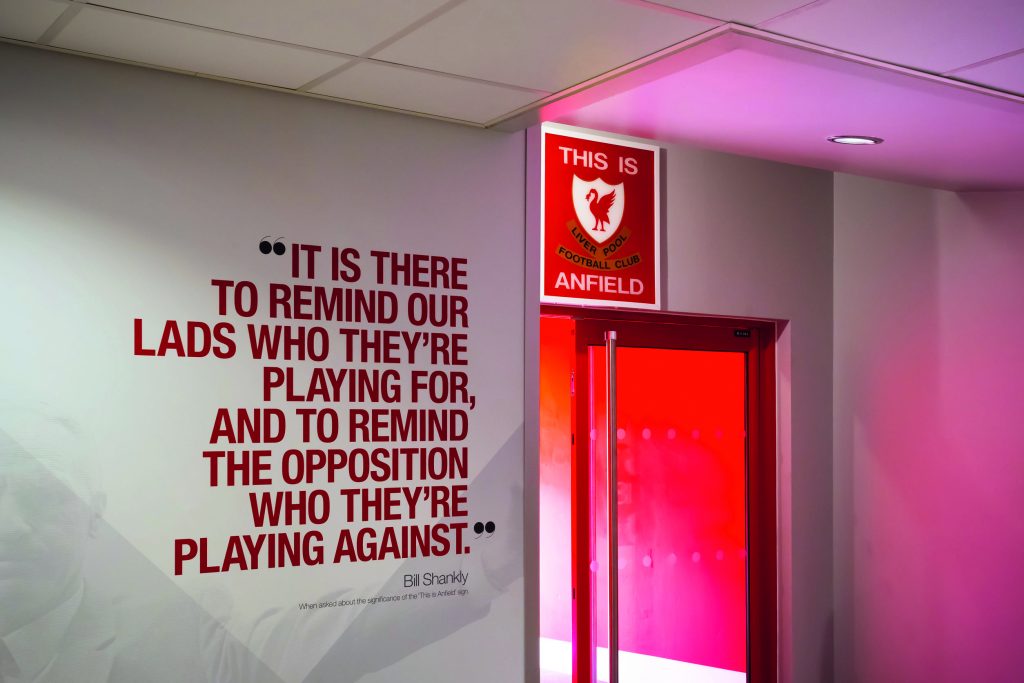
When Everton, the city’s only big club at the time, decided to end their eight-year stint at Anfield in 1892, a new club was needed to play there, and Liverpool FC came into being. Just 300 people watched their first match – a 7-1 win over Rotherham Town on 1 September of that year – but interest grew rapidly as the figure jumped to 3,000 for a match later that month and to 26,000 two years later when Everton were the opponents. “The stadium’s record attendance saw a whopping 61,905 fans visit to see their heroes beat Wolverhampton Wanderers in an FA Cup fourth-round match in February 1952,” club historian and museum curator Stephen Done tells Going Places.
The stadium and team fell on hard times when Shankly became manager in 1959. Finances were tight, so he inspired volunteers to spruce up Anfield. On the pitch, he enjoyed success by urging his players to make a big effort for disillusioned fans, while he galvanised supporters by telling them their passionate backing would lift the team. “Liverpool is an institution,” Shankly explained later. “My aim was to bring the people close to the club.”
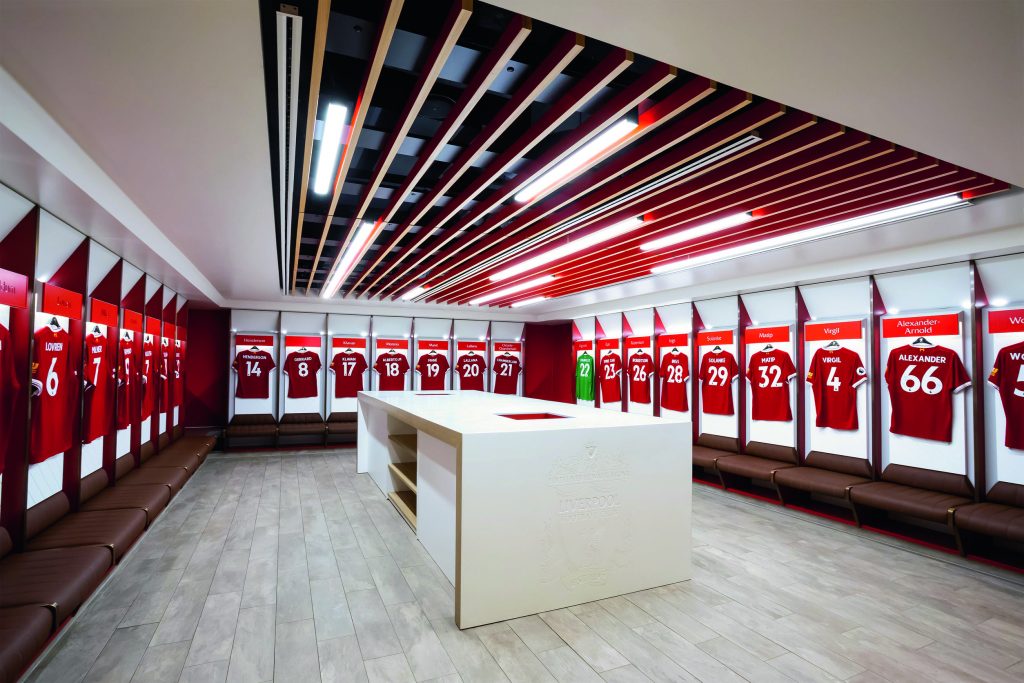
Shankly’s Liverpool gained promotion to the top division and soon won the League and FA Cup, all at a time when the city was spawning several top comedians and a host of successful pop groups, led by The Beatles, and also including Gerry and the Pacemakers. Fans on the Kop reflected this cultural development, becoming famed for their humour and their singing, including adapting The Beatles’ songs with footballing lyrics. That wit was apparent when an opposition goalkeeper accidentally threw the ball into his own net, prompting a Kop rendition of Careless Hands, a popular song at the time. This sense of fun was also on show in 1965 when snow caused the late postponement of a match against Cologne and thousands of Liverpool fans already on the ground had a long snowball fight on the pitch.
Away teams at Anfield have also been struck by the sportsmanship they have encountered. The home supporters, unlike their counterparts at other clubs, have often applauded triumphant opponents, even when their own disappointment has been intense. Most notably, they did so when Leeds United and Arsenal clinched the league title at Anfield in 1969 and 1989 respectively, both times ending Liverpool’s hopes in the process. Visitors to the club are also assured of a warm welcome. On match days. two fanzones are open from four hours before kick-off at Anfield Road and Walton Breck Road, offering live entertainment, activities and merchandise, plus food and drinks.

Those wanting to get a feel for Anfield itself can join the stadium tour, which runs seven days a week. Two particular standouts of the tour are the bird’s-eye view of the pitch and the city from the top of the main stand, along with a handheld interactive guide that gives a 360-degree version of the same view on a match day, with sound effects. Other areas to look out for are the home and away team dressing rooms; the press room; a walk down the players’ tunnel; a chance to sit in the manager’s dug-out and on the Kop; and a look around the club museum, which includes the Steven Gerrard collection of memorabilia from his great career at the club. Plenty of interactive features are included, and the audio guide is available in nine languages.
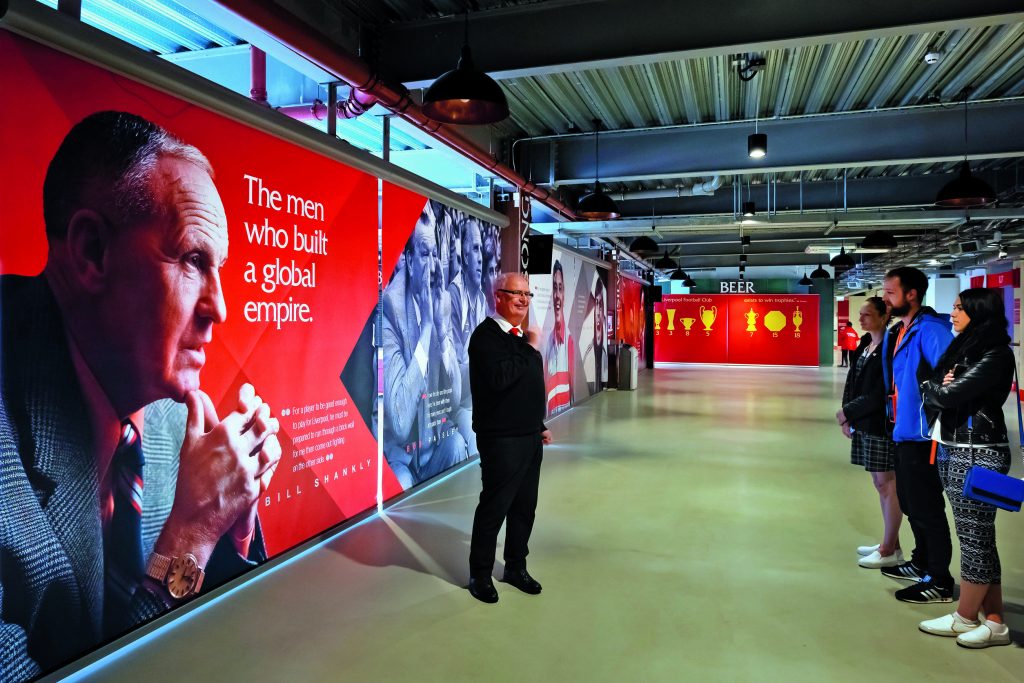
“The Home Team dressing room is the place to take selfies beside your favourite player’s shirt, but don’t overlook the Away Team dressing room, where (former Liverpool player) Jamie Carragher offers an incredible insight via video into his personal choice of the eleven opposition players he most respects and found tricky to play against,” says Done.
Running Anfield on match days is a huge operation. “It will probably come as little surprise that keeping the stadium in top condition is a huge operation, and we’ve got an excellent team made up of lots of different roles that help make the magic happen on match days, but also on non-match days too,” explains Done.
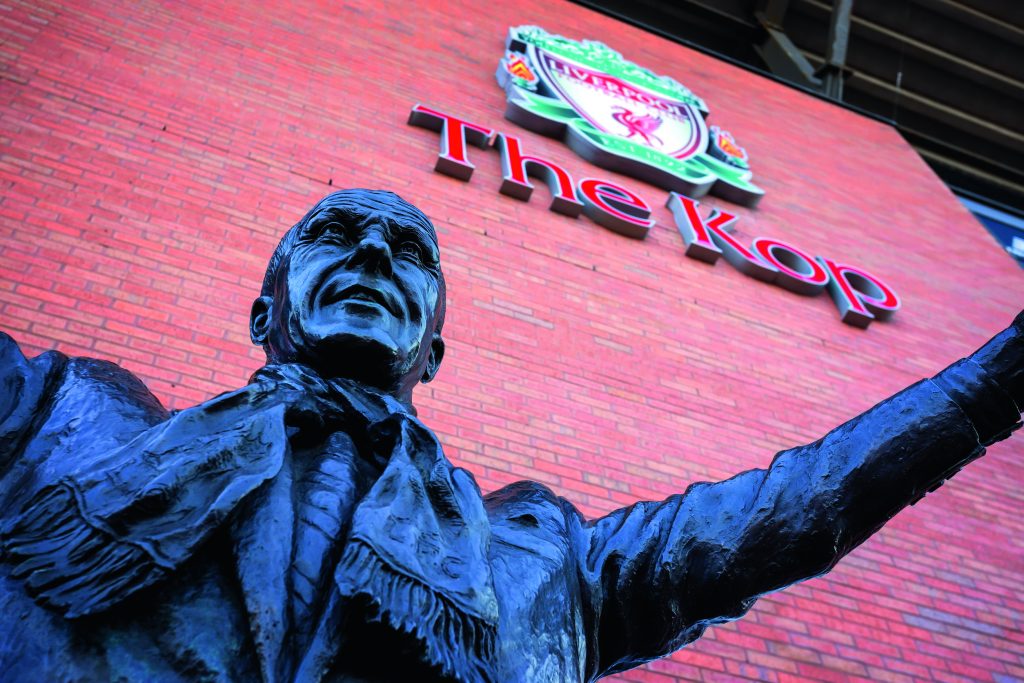
Groundsmen from the club’s training ground and academy join the regular Anfield groundsmen on match days to look after the pitch and equipment, while catering and kitchen teams are also kept busy. There are “chefs and kitchen porters, along with kiosk staff and cashiers,” says Done, who has been with the club since 1997. “Our front of house staff, hosting team, staffing guides and porters also play a huge role in making events at the stadium a big success, ensuring that fans receive an unforgettable experience during their time with us.”
Liverpool have created unforgettable history, winning the English league title 18 times and the European crown on five occasions. As Jürgen Klopp, their impressive German manager, tries to add to those tallies, football followers around the world can monitor how he is progressing by visiting a stadium with a glorious past and a promising future.
Photography by 123rf

